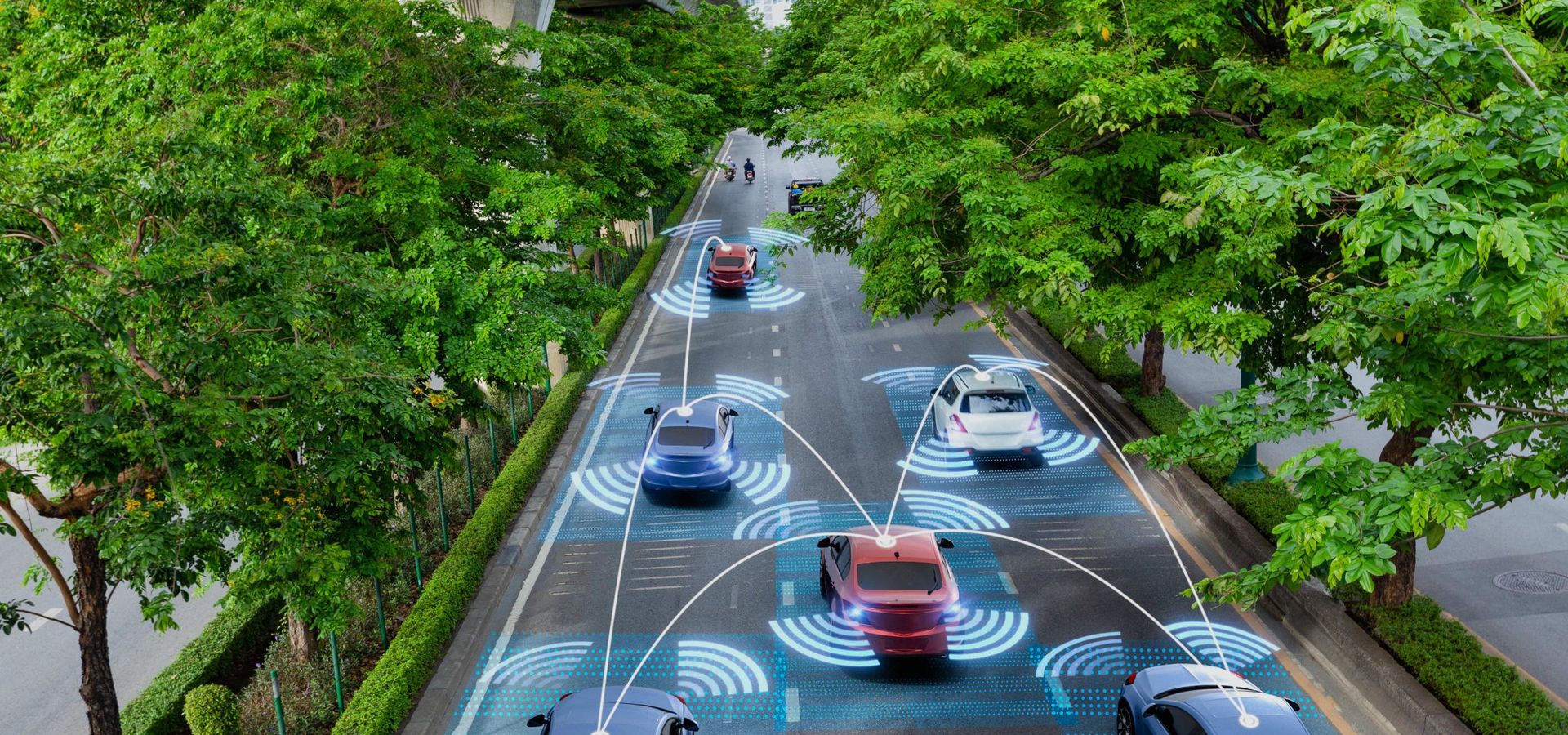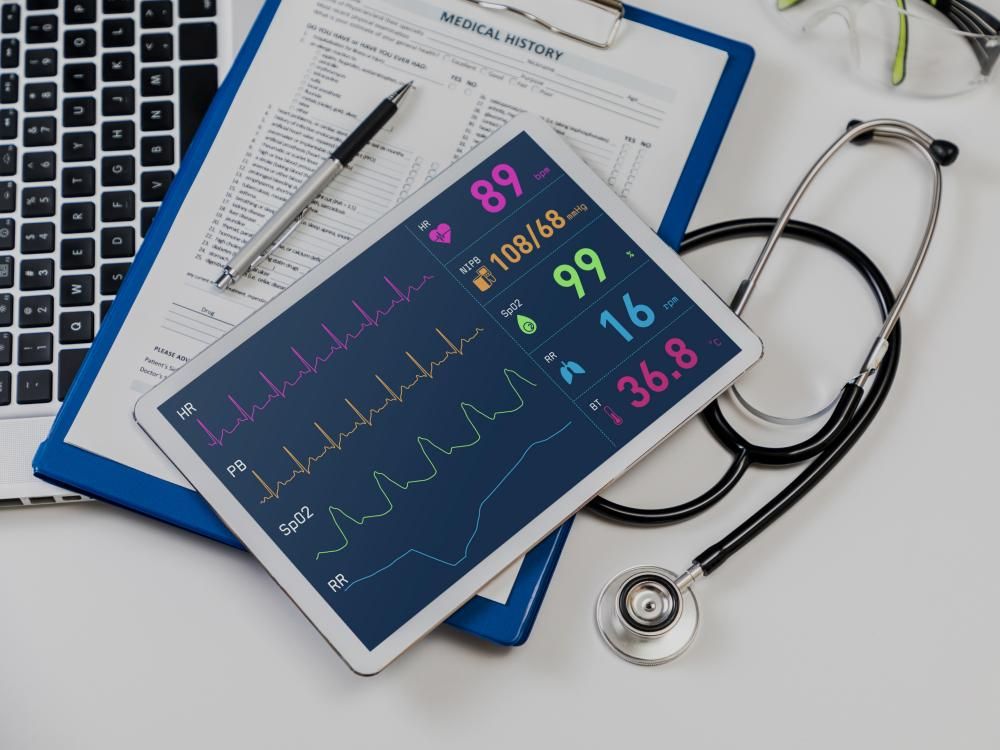
Top IoT use cases & statistics for 2025
March 21, 2025

by Ilya Skiba,
IoT Solution Architect
Helping businesses streamline various operations and make more informed decisions, IoT systems are being widely adopted across all industries. Let’s examine the most popular use cases of IoT software implemented across multiple sectors, as well as the most prominent real-world IoT applications, and get acquainted with the top IoT statistics for 2025.
Top IoT use cases across industries
Equipment predictive maintenance
Industrial IoT solutions collect real-time data from equipment endpoints, enabling remote monitoring of machines’ condition and helping predict potential issues, thus giving the personnel time to prevent costly failures and production downtime.
When IIoT sensors are installed densely enough to gather information on everything inside a factory, manufacturers can create a virtual copy of their facility, or a digital twin, with the help of machine learning and cloud computing technologies. Digital twins in manufacturing let engineers simulate production floor processes, conduct experiments, and discover process bottlenecks or opportunities for product improvement without interfering in real-life manufacturing workflows.
Smart energy management
Quality control
Remote patient monitoring & diagnostics
Healthcare facility management
Medication management
Automotive
Connected vehicles
Autonomous driving
Along with AI and computer vision, IoT is an integral element of autonomous vehicle technology. Currently, there are driver-assistance systems providing various levels of automation, spanning from simply helping the driver with lane centering or cruise control to completely taking the driving over, with no human intervention needed.
Car predictive maintenance
Oil & gas
Oil exploration
Pipeline management
Smart tanks & pumping systems
Network asset monitoring
Smart connectivity solutions
Supply chain management
Warehouse & stock inventory management
Experience personalization
Self-checkout
BFSI
Improved security
ATM monitoring
Logistics
Fleet management
Fleet predictive maintenance
Warehouse inventory management
Drone-based delivery
Agriculture
Precision farming
Livestock management
Smart cities
Smart parking
Utility management
Waste management
Public transportation optimization
Municipalities can use IoT sensors to track public transport utilization patterns. Then, using IoT analytics, they can detect overloaded or underloaded bus or train routes and optimize the allocation of transport resources across the city.
Smart lighting
HVAC control
Improved safety & security
Smart appliances
Prominent real-life applications of IoT
Shopping with Amazon Go
Drone-based delivery from Walmart
Video title: Walmart drone delivery
Video source: corporate.walmart.com — We’re Bringing the Convenience of Drone Delivery to 4 Million U.S. Households in Partnership with DroneUp
LG smart appliances
Self-driving taxis by Waymo
Caterpillar MineStar
Smart irrigation for Deep Sky Vineyard
Self-checkout from Mashgin
Eversense glucose monitoring system
Looking to adopt an IoT solution for your business?
IoT statistics for 2025 & beyond
IoT market state & growth trends by use cases
The global Internet of Things (IoT) annual revenue is estimated at around $445.3 bn in 2025 and is predicted to almost double by 2033, reaching a revenue of $934 bn.
In 2025, the largest IoT revenue share would be generated by connected vehicle technologies, accounting for $101.6 bn. Payment terminals are expected to bring $46.8 bn of revenue, while asset tracking and monitoring systems and precision specialist robots in the industrial IoT market accounted for $18.2 bn and $15.9 bn, respectively.
- Connected vehicles
- Consumer Internet & media devices
- IT infrastructure
- Office equipment
- Payment terminals
- Personal assistance robots
- Personal monitoring & tracking
- Portable information terminals
- White goods
- Asset tracking & monitoring
- Autonomous vehicles
- Inventory management & monitoring
- Precision specialist robots
- Real world "visualization"
- Portable information terminals
- Remote process control
- Smart grid
- Access control & intercoms
- Building automation
- CCTV
- Environmental monitoring
- HVAC
- Lighting
- Parking space monitoring
- Public information & advertising screens
- Road infrastructure monitoring & control
- Security & fire alarms
Scheme title: Internet of Things (IoT) annual revenue worldwide from 2023 to 2030, by use case (in billion U.S. dollars)
Data source: Statista.com
The growing number of IoT devices
The total number of connected IoT devices globally is projected to almost double from 20.1 billion in 2025 to more than 29 billion devices in 2030.
Scheme title: Number of IoT-connected devices worldwide in 2025 with forecasts to 2030
Data source: Statista.com
Top IoT security issues
According to Gartner, over 80% of organizations already employ IoT technology, and over 20% have already experienced an IoT-related cyber attack in the past three years. OWASP names the top ten IoT security challenges:
Scheme title: IoT security challenges
Data source: owasp.org — OWASP Internet of Things
IoT economic value
In their research, McKinsey found out that IoT in the manufacturing industry is expected to generate the largest value in 2030, about 26% of the total potential value. Next comes IoT for the healthcare industry, evaluated to bring up to $1.76 bn of revenue.
Scheme title:IoT estimated economic value in 2030, $ billions
Data source: mckinsey.com — The Internet of Things: catching up to an accelerating opportunity
$5,500 – $12,600bn
Grand total
Note: figures may not sum, because of rounding.
The geography of IoT adoption
By 2030, developed countries are expected to account for 55% of the potential IoT economic values, but China, with its mass adoption of 5G, will undoubtedly become a global force of IoT growth during the estimated period.
Scheme title: IoT economic value segregated by region
Data source: mckinsey.com — The Internet of Things: catching up to an accelerating opportunity
Factors influencing IoT adoption
Positive and negative factors affecting the at-scale adoption of IoT vary from industry to industry. Still, McKinsey managed to single out universal headwinds and challenges businesses face when implementing IoT systems.
Scheme title: Factors influencing IoT integration
Data source: mckinsey.com — The Internet of Things: catching up to an accelerating opportunity
Tailwinds accelerating the adoption of IoT
Perceived value proposition
Technology performance
Connectivity
Headwinds complicating IoT adoption
Change management
Interoperability
Installation
Cybersecurity
Talent
Privacy & confidentiality
IoT implementation: 5 best practices
Integrating any IoT system into business processes requires a comprehensive strategy and a proper approach. Here are the top 5 best practices to help you successfully implement an IoT solution.
1 Set clear objectives
2 Ensure interoperability & compatibility of IoT devices
3 Select powerful IoT data analytics tools
4 Don’t neglect security
5 Adopt a consistent change management strategy
Start your digital transformation with IoT
IoT is a fast-growing technology that offers transformation opportunities to companies of all sizes. By taking a proper approach to IoT implementation and eliminating all potential obstacles, businesses can unlock the benefits of IoT solutions and achieve real-time visibility into business processes, increase their operational efficiency, reduce operating costs, and get a wider range of data-driven predictive and prescriptive insights. If you’re looking for a technology partner to bring your IoT solution to life, turn to Itransition experts for professional IoT implementation services.

Service
Internet of things software development
Professional IoT development services to deliver IoT solutions that efficiently manage the network of connected devices and generate real-time insights.

Insights
Blockchain for IoT security — a perfect match
Find out how the application of blockchain in IoT can help address data security issues through decentralization and operations transparency.

Insights
Internet of medical things: 4 use cases
Learn how the internet of medical things can increase the satisfaction of your patients, improve internal processes and staff allocation.

Case study
IoT device management software
Learn how Itransition built a custom iOS app for managing air humidifiers at any location and getting accurate interior climate statistics.

Insights
Top machine learning use cases and industry applications
Discover top machine learning use cases and their examples across industries and learn how they make a difference for the companies.